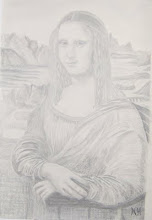Quantum Atom Theory can explain the paradoxes of quantum physics and can also give us a valid explanation of the real world of everyday life.
In this theory we have the paradoxes of quantum physics because we have no fundamental understanding of how time is formed. There has to be a universal process forming the passage of time. In modern physics we have an infinity number of reference frames and each one has its own proper time relative to its position and moment.
But there is no understanding of how time is formed within each reference frame. In Quantum Atom Theory time is formed by the absorption and emission of EMR or light by the atoms. The continuous absorption forms the future and the emission forms the past within the object’s or observer’s own reference frame.
The observer as a group of atoms react with the wave-particle duality of light in unison collapsing the wave-function into photons of quantized energy forming their own time photon by photon or moment by moment therefore we have free-will to form our own future.
Basically in this theory EMR or light expands out in a spherical waves and when it comes in contact with the atoms of another object the waves collapse into photons of quantized energy. This continuous process forms the forward passage of time the greater the energy the slower time runs the stronger the gravitational field and greater the curvature of space-time.
The paradoxes of Quantum physics explained by Quantum Atom Theory
The Double Slit Experiment can be explained as a process unfolding in time. The experiment has its own reference frame or time frame that is isolated from the observer. Until the observer turns on a detector to determine which slit a photon went through. This forms a new photon that is part of the observer time frame and at that moment in time the interference pattern collapses.
Heisenberg's Uncertainty Principle is the same uncertainty that the observer will have with any future event. This is because the wave-function represents the forward passage of time at the most fundamental level. Time only moves forward because the wave-function only works one way we always know the position and momentum of a quantum particle in the past.
Quantum entanglement is formed because light has spherical symmetry and a photon will therefore have opposite spin on opposite sides of the light sphere.
The wave-particle duality of EMR is formed by the quantization of light waves when they come in contact with electrons on the surface of atoms. This forms new photons of quantized energy forming the forward passage of time and the geometry of spacetime.
Nonlocality or the ability for things to happen instantaneous at a distance is because time is being formed by light waves radiating out from its radius forming symmetry in three dimensions spacetime.
Superposition in just future probability this is why we can never physically observe an atom in two places at once. To do so would form a photon that would be part of our own time frame and therefore could not be part of any future probability.
Quantum tunneling can be explained by the wave nature of EMR, just as light waves can penetrate glass or x-ray can penetrate the body. At the quantum level EMR in the form of wave can penetrate objects forming a future probability of where quantum particles will be found.
The Twin Paradox is formed because the frequency of an accelerating object will increase (mass will increase) relative to the received frequency that is therefore reduced by the Lorentz factor. As the inward absorption and outward emission of EMR is reduced the duration of a clock cycle will increase for the accelerating object and time will be measured to run more slowly in that reference frame.
Nonlinearity is a kind of chicken and egg paradox, mass tells spacetime how to warp and at the same time warped spacetime tells mass how to move. Once we see that time is formed by photons of quantized energy (energy equals mass) we have a process that is linear within its own reference frame.
~





No comments:
Post a Comment